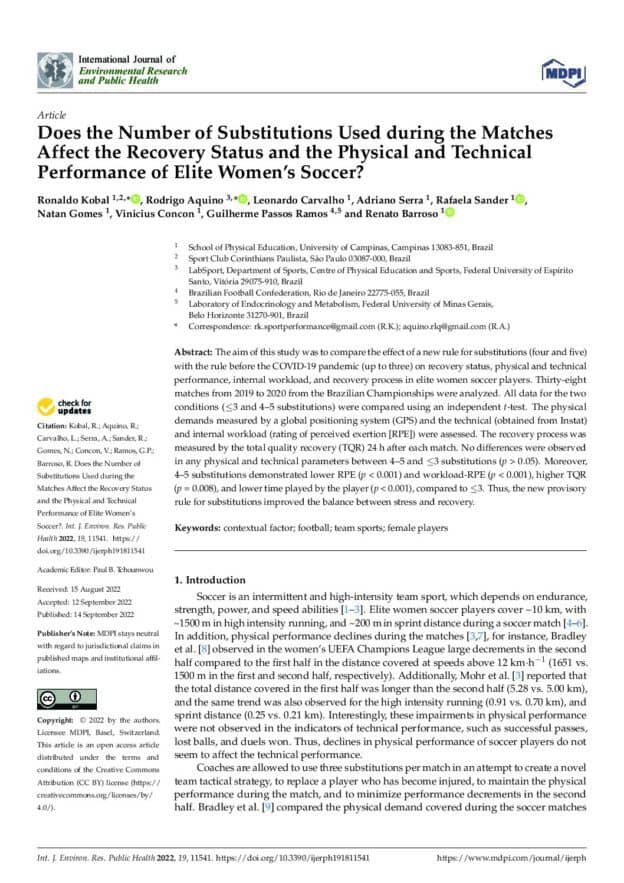Abstract
The aim of this study was to compare the effect of a new rule for substitutions (four and five) with the rule before the COVID-19 pandemic (up to three) on recovery status, physical and technical performance, internal workload, and recovery process in elite women soccer players. Thirty-eight matches from 2019 to 2020 from the Brazilian Championships were analyzed. All data for the two conditions (≤3 and 4–5 substitutions) were compared using an independent t-test. The physical demands measured by a global positioning system (GPS) and the technical (obtained from Instat) and internal workload (rating of perceived exertion [RPE]) were assessed. The recovery process was measured by the total quality recovery (TQR) 24 h after each match. No differences were observed in any physical and technical parameters between 4–5 and ≤3 substitutions (p > 0.05). Moreover, 4–5 substitutions demonstrated lower RPE (p < 0.001) and workload-RPE (p < 0.001), higher TQR (p = 0.008), and lower time played by the player (p < 0.001), compared to ≤3. Thus, the new provisory rule for substitutions improved the balance between stress and recovery.



Responses